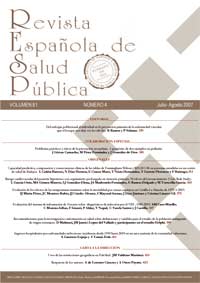Predictive Capacity, Comparison and Clinic Consecuences of the Framingham-Wilson and REGICOR Tables in Persons for Whom Care has been Provided at a Health Care Center, Badajoz, Spain
Abstract
Background: Framinghams original equation modified by Wilson and the REGICOR calibration are widely recommended in coronary risk stratification. This study is aimed at: 1) Analyzing the ten-year predictiveness of the Framingham-Wilson and REGICOR tables among a population for which care has been provided at an urban health care center 2) Evaluating the concordance use of hypolipemiant and antihypertensive drugs resulting from these tables. Methods: Observational, longitudinal, retrospective study of a cohort of patients for whom care was provided at a primary care center. A total of 1011 patients ages 35-74 (mean age 55.7, 56.0% females) without any evidence of cardiovascular disease. Those patients having a >20% risk in Wilson and >10% in REGICOR were considered high-risk. Results: The actual coronary risk of the population was 10.7%, whilst the mean coronary risk estimated with the functions was 17.0% in Wilson and 6.6% in REGICOR. A total 29.6% was classified high-risk in Wilson as compared to the 18.2% in RECIGOR (p<0.05). The percentage of high-risk males was significantly higher in Wilson than in REGICOR (49.0% vs. 29.4%, p<0.01). The Kappa index was 0.70 (95 CI: 0.67, 0.73). A total of 39.5% of the patients (as per Wilson) and 31.4% (as per REGICOR) were candidates for taking hypolipemiant drugs (p<0.001). The validity criteria of both of these functions are quite discreet: sensitivity, specificity and odds ratio diagnosed at 50.9%, 73.1% and 2.11 in Wilson and 28.7%, 83.1% and 1.98 in REGICOR, respectively. Conclusions. The Wilson and REGICOR tables show an acceptable degree of concordance, but their validity parameters are discreet. The Framingham-Wilson function screens a higher percentage of patients as being candidates for hypolipemiant drugs.Downloads
Published
2008-03-14
Issue
Section
ORIGINALS

